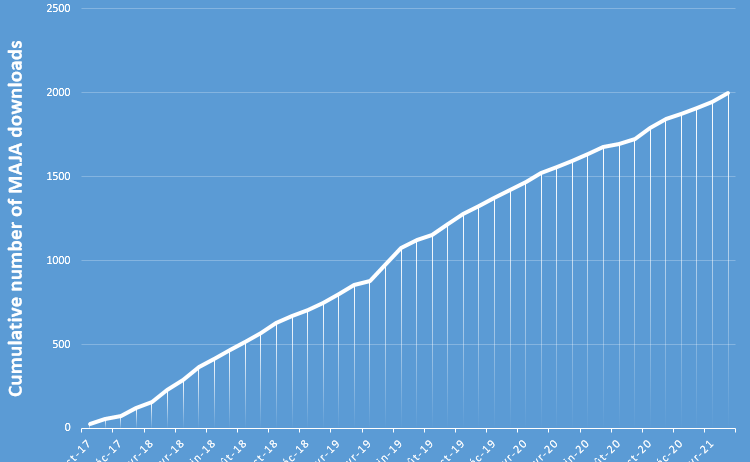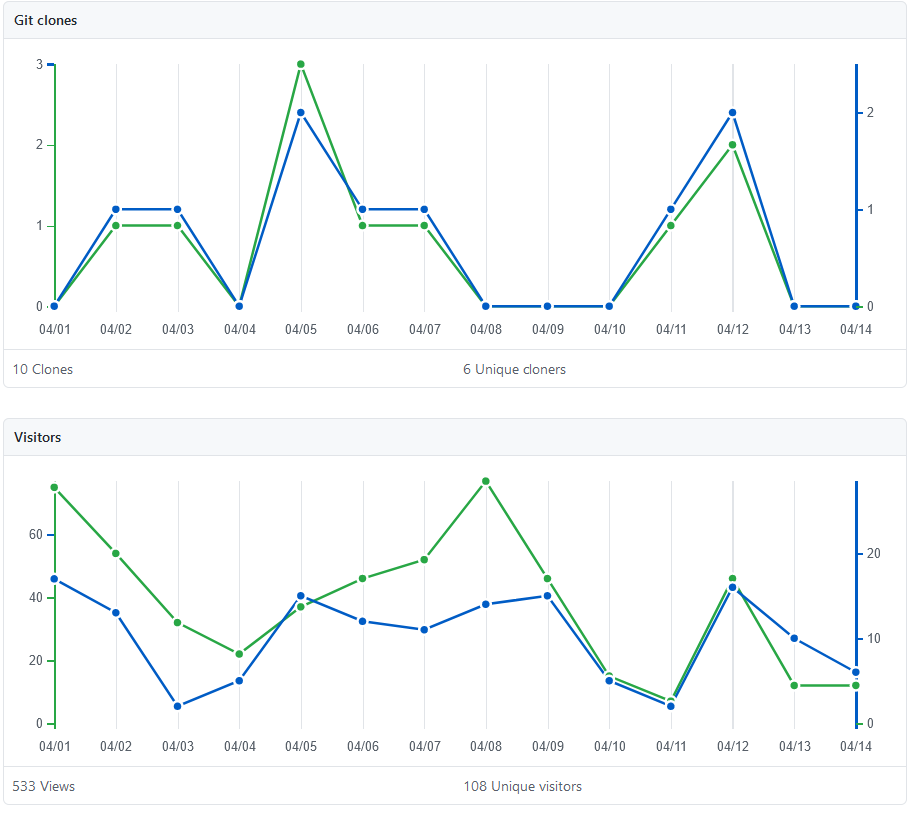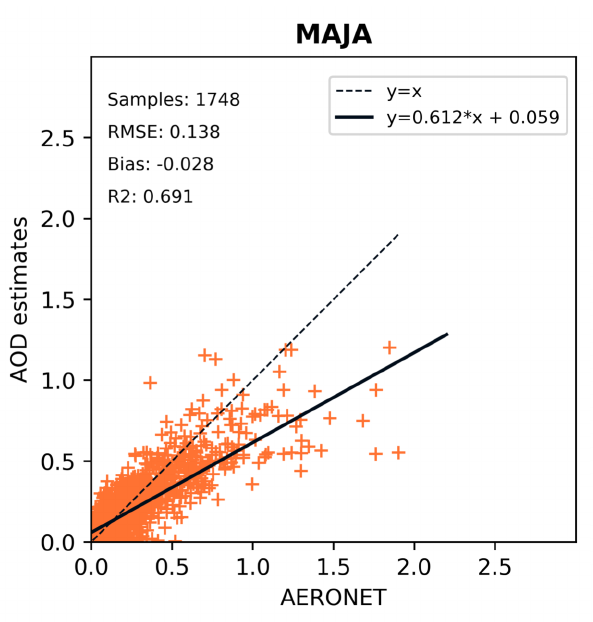2 000 downloads for MAJA !
The distribution of MAJA L2A processor, as an executable software, started in april 1997, but we started counting the number of downloads only since October 2017. The cumulative number of downloads just reached 2000 on April the 2nd 2021. It is on average 1.56 downloads per day, and more than 2 downloads per work day !
Since October 2020, MAJA became an open source software distributed on github. Github does not count the downloads, and only provides the number of clones made by different users in the last 2 weeks. The plot below shows that we have to add 3 clones per week to the downloads of the executable version. As the github site also serves as MAJA’s forum so far, you can also see the traffic on the documentation pages and forum in the plot provided below.
MAJA is not a simple software that runs on a laptop. It is designed to work only on linux platforms, and the Sentinel-2 data require a large disk space, and a comfortable memory. We tehrefore did not expect it would reach such a large amount of downloads. If you are one of MAJA users, we would be pleased to hear about the aplications for which you used MAJA.










